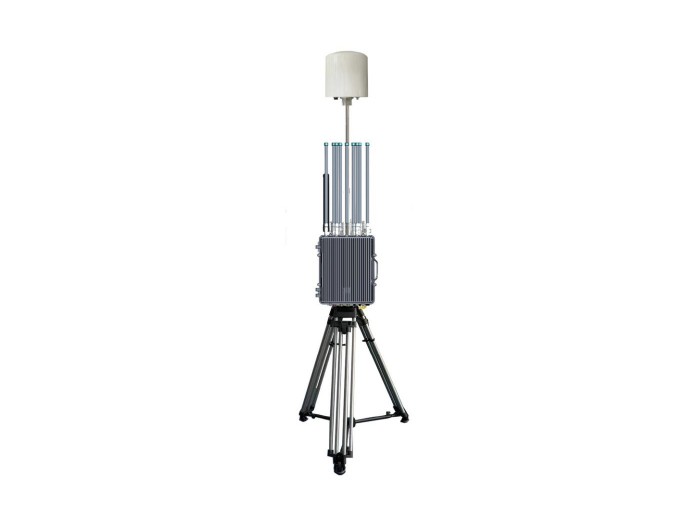Anti Unmanned Aerial Vehicle Weapons in Military Operations
In today's rapidly evolving battlefield, the proliferation of unmanned aerial vehicles (UAVs), commonly known as drones, has introduced significant security challenges. Military forces worldwide face escalating threats from hostile drones conducting reconnaissance, delivering payloads, or disrupting communications. This problem urges the adoption of advanced anti unmanned aerial vehicle weapons capable of detecting, tracking, and neutralizing UAV threats effectively. For armed forces concerned with drone incursions disrupting strategic operations, understanding the landscape of counter-UAV systems is vital. Whether defending military bases, critical infrastructure, or deployed personnel, integrating cutting-edge counter-drone technologies has become an operational imperative that addresses increasing UAV proliferation and sophistication.
Understanding Anti Unmanned Aerial Vehicle Weapons: Definition and Importance
Anti unmanned aerial vehicle weapons encompass a variety of technologies designed to detect, disrupt, disable, or destroy hostile drones in military contexts. These systems counter the growing risks posed by UAVs used for surveillance, targeting, or weaponized attacks.
With military drones estimated to exceed 15,000 operational units worldwide as of 2023, threats are diverse ranging from low-cost reconnaissance drones to high-end armed UAVs. Without effective countermeasures, these UAVs can compromise troop safety, gather intelligence undetected, or disrupt communications. Anti-UAV weapons fill a critical role by ensuring airspace control and force protection through methods including electronic warfare, kinetic interception, and directed-energy weapons.
Effective counter-UAV systems deliver operational benefits such as rapid threat identification, reduced collateral damage, and increased tactical responsiveness. Militaries emphasize multi-layered defense architectures combining radar, radio-frequency detection, jamming devices, and even laser weapons to address UAV threats comprehensively. The capability to neutralize drones before they can execute hostile actions is a vital component of modern defense strategies.
Key Technologies Behind Anti UAV Weapons
Anti-UAV weapons rely on a blend of emerging and mature technologies designed to meet different threat profiles. These include:
- Radar and sensor systems: Advanced radar networks augmented with electro-optical and infrared sensors enhance detection range and target classification. For example, the U.S. military’s AN/MPQ-64 Sentinel radar offers all-weather detection of small drones up to several kilometers away.
- Electronic warfare and jamming: Radio-frequency jammers disrupt UAV control signals and GPS navigation, effectively immobilizing drones. The UK's Wide Area Drone Defence system can jam multiple drones simultaneously, providing scalable protection.
- Directed energy weapons (DEWs): Laser-based countermeasures provide precise, low-collateral means to neutralize drones, especially effective against swarms. The U.S. Army’s Mobile Experimental High Energy Laser (MEHEL) system demonstrated successful drone disablement during testing phases.
- Kinetic interceptors: Systems like anti-drone projectiles, nets, or surface-to-air missiles physically destroy UAVs. Short-range weapons such as the Rafael Drone Dome combine radar detection with projectile-based neutralization.
Integrating these technologies within military strategy requires balancing factors like engagement range, operational environment, and rules of engagement. Many armed forces adopt layered defense postures to combine detection and mitigation techniques, thereby increasing mission success rates against sophisticated UAV attacks.
Applications of Anti UAV Weapons in Real-World Military Operations
The tactical application of anti unmanned aerial vehicle weapons is demonstrated across diverse military environments, highlighting their vital role in force protection and battlefield awareness.

In recent conflicts, ground forces have used electronic jamming to prevent drone surveillance before launching coordinated counter-attacks. For instance, during operations in urban warfare zones, deploying portable jamming devices successfully blocked enemy UAV reconnaissance, reducing ambush risks. In air defense, militaries employ integrated sensors and missile interceptors to safeguard airspace from hostile drone incursions.
Naval forces also use anti-UAV systems to defend warships against airborne threats with layered countermeasures such as radar detection combined with laser weapons. The integration of real-time data fusion enables rapid threat assessment and engagement decisions—reducing reaction times from minutes to seconds.
Moreover, military bases rely on aerial surveillance complemented with automated anti-drone defenses, including radar, acoustic sensors, and kinetic countermeasures. The ability to detect and neutralize drones before they reach sensitive areas preserves operational security and personnel safety.
Looking ahead, counter-UAV capability development focuses on scalability, automation, and artificial intelligence-enabled threat recognition to address drone swarms and emerging UAV technologies, ensuring evolving battlefield dominance.
Recommendations for Implementing Anti UAV Solutions
- Conduct comprehensive threat assessments: Analyze the operational environment and probable drone threats to select appropriate anti-UAV technologies tailored to mission needs.
- Adopt layered defense systems: Combine sensor networks, electronic warfare, kinetic, and directed energy weapons for multi-dimensional drone defense and redundancy.
- Invest in autonomous and AI-enhanced systems: Use artificial intelligence for rapid UAV detection, classification, and engagement to counter fast, low-signature drones effectively.
- Train personnel extensively: Ensure troops understand capability use, threat recognition, and engagement protocols to maximize defense system effectiveness.
- Stay updated on technology advances: Monitor evolution in drone and counter-drone technologies to maintain strategic advantages; visit our website regularly for the latest insights and product offerings.
Conclusion
As UAV threats grow increasingly sophisticated, integrating robust, multifaceted anti unmanned aerial vehicle weapons into military operations is essential to sustain strategic superiority and protect critical assets. From state-of-the-art radar detection to cutting-edge laser countermeasures, the evolving landscape of counter-drone technologies equips armed forces to address current and future drone challenges head-on.
We are committed to providing expert guidance and advanced solutions tailored to your defense needs. Contact us today for professional consultation and explore how our innovative anti-UAV systems can enhance your operational security and readiness. Want to learn more? Visit our website now!
















